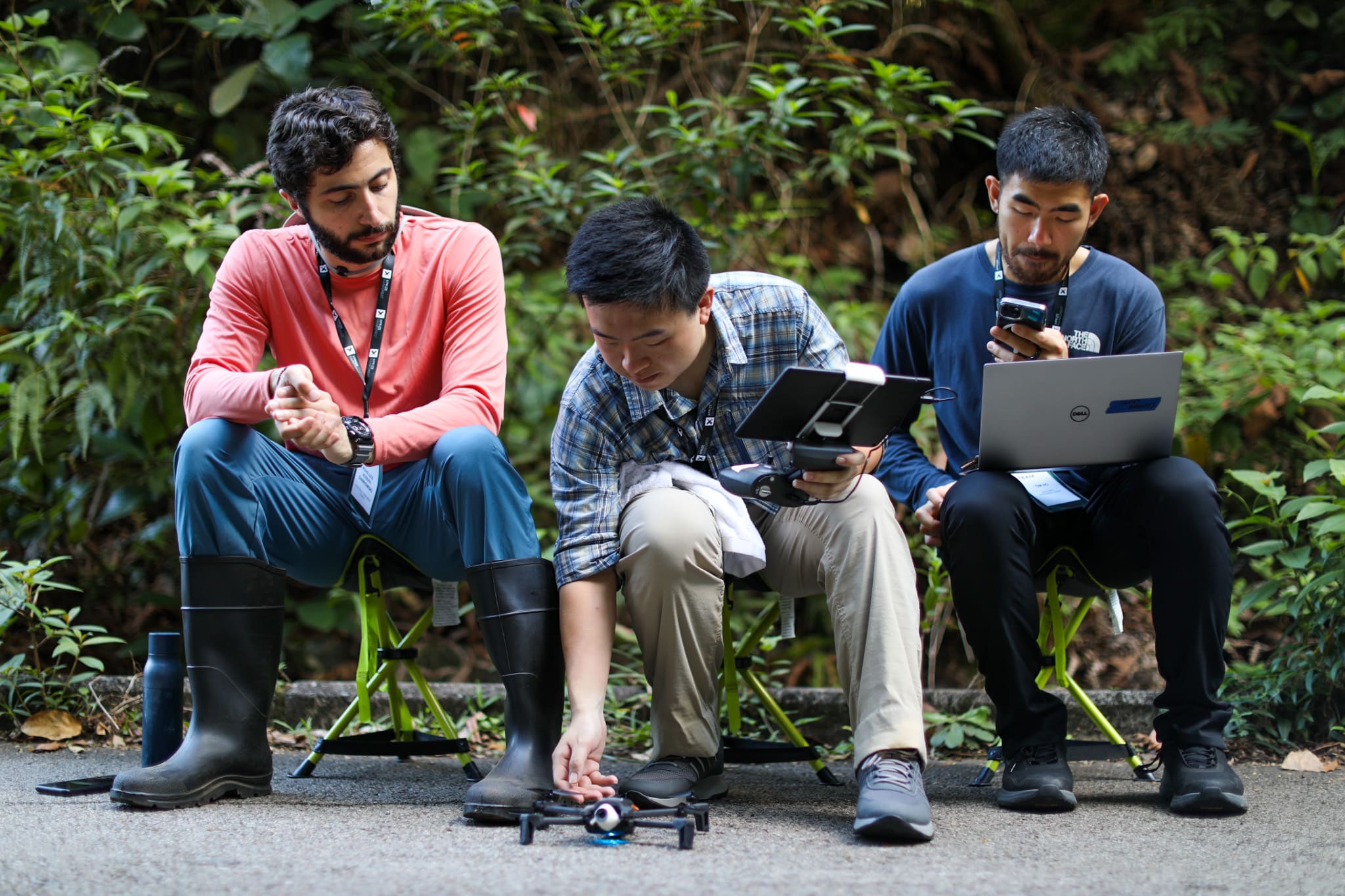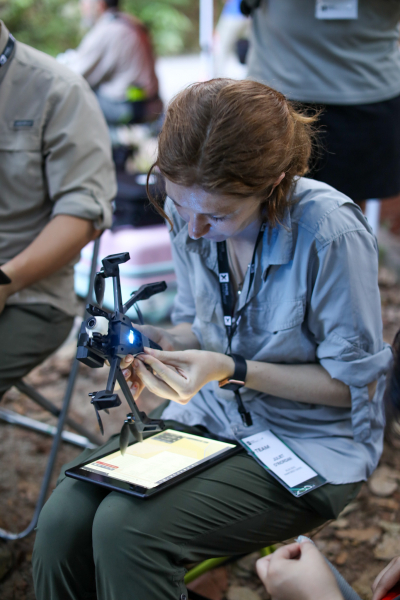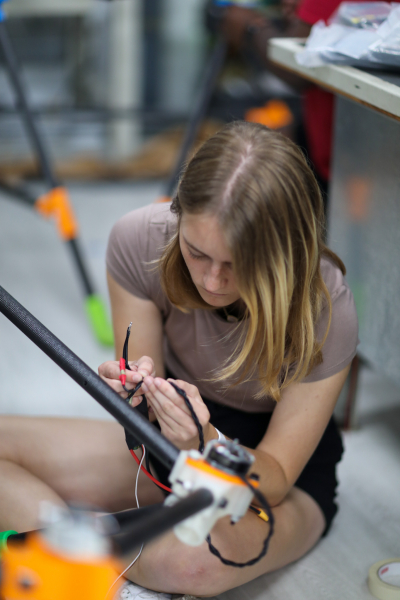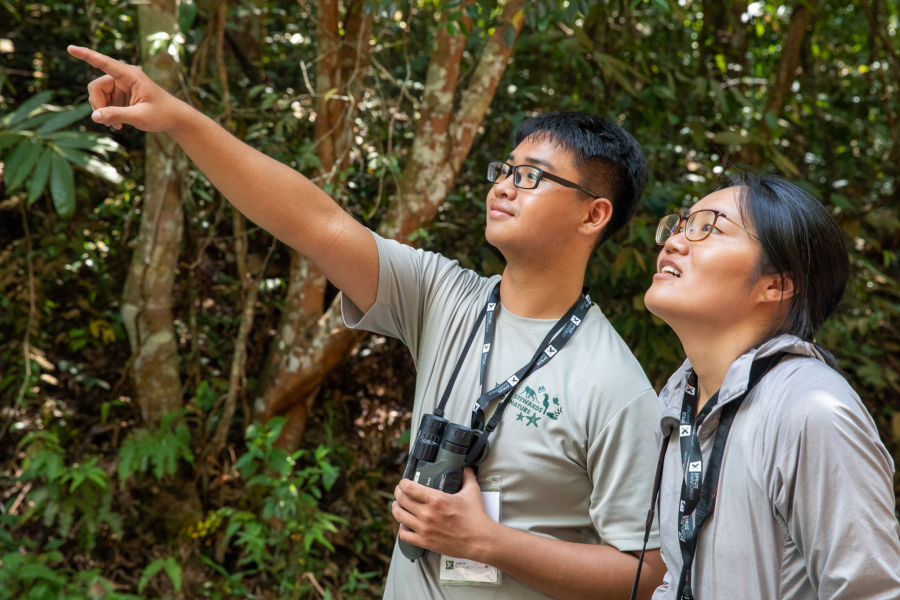Inside the $10M XPRIZE Rainforest Competition Semifinals
By Miranda Volborth
Engineers and conservationists came together in a race to understand and preserve the world’s most biodiverse ecosystems

Over millions of years of endlessly sunny, humid days, tropical rainforests have evolved into Earth’s biological jewel boxes. They make up less than two percent of the earth’s surface, yet they contain half of all its terrestrial species, each playing its own part in how the complex ecosystems function.
These forests are in grave danger. Swathes of the Amazon—a huge carbon sink and rainmaking powerhouse that stores upward of 90 billion tons of carbon in its standing trees—are feared to have turned to savannah after being cleared for agricultural use. Climate change is playing an increasingly aggressive role in the forests’ decline, as hotter, drier conditions decrease available habitat and prevent trees from producing and cycling water normally.
A deeper understanding of the rainforests and the benefits they offer humankind could help change how the standing forests are seen and valued.
Enter the Blue Devil Forest Divers.
 The Blue Devil Forest Divers is an interdisciplinary team of technologists and conservationists that competed in the XPRIZE Rainforest semifinals this summer, in a bid to see who could identify the most species in the rainforest ecosystem and generate insights from their observations in the field. The team is headquartered at Duke University and is co-led by associate professor of electrical and computer engineering Martin Brooke and professor of conservation ecology Stuart Pimm.
The Blue Devil Forest Divers is an interdisciplinary team of technologists and conservationists that competed in the XPRIZE Rainforest semifinals this summer, in a bid to see who could identify the most species in the rainforest ecosystem and generate insights from their observations in the field. The team is headquartered at Duke University and is co-led by associate professor of electrical and computer engineering Martin Brooke and professor of conservation ecology Stuart Pimm.
XPRIZE challenges interdisciplinary teams to solve global challenges—everything from space travel to carbon capture—with innovative technological approaches, in competition for massive cash prizes. In the XPRIZE Rainforest competition, the Alana Foundation, a social and environmental impact organization, is sponsoring a $10 million purse.
 Brooke isn’t after the money, though. As an educator who struggles to keep class projects fresh, it’s the perfectly calibrated challenge that is so appealing. The objectives of XPRIZE are open-ended, difficult, impactful and attainable—the exact recipe that Brooke strives for.
Brooke isn’t after the money, though. As an educator who struggles to keep class projects fresh, it’s the perfectly calibrated challenge that is so appealing. The objectives of XPRIZE are open-ended, difficult, impactful and attainable—the exact recipe that Brooke strives for.
The competition semifinals were held in June of 2023 in Singapore, a densely populated city-state with a tiny rainforest preserve at its center. The Duke team arrived at Singapore’s Changi airport with a fleet of drones that they would use to collect data from the forest. Two of them were large hybrid-fueled drones—the “mother drone” and the “relay drone”—that were designed and built from scratch by Duke students over the course of several years. The mother drone’s job was to carry the smaller battery-powered drones deep into the forest and provide them a platform from which to launch and land. This approach allowed the small drones to take photos and deliver sound recorders and insect traps to areas that they wouldn’t be able to reach under the steam of their lithium-ion batteries. The relay drone’s job was to hover close to the edge of the forest and communicate information from the mother drone to the Duke team on the ground.
 In Singapore, competitors were required to demonstrate that they could deploy their tech-based approaches in a rainforest setting. Yet the teams also benefited from Singapore’s highly developed infrastructure. A power grid, wireless network and public transportation—not to mention a cold drink and a hot shower—were always a stone’s throw away.
In Singapore, competitors were required to demonstrate that they could deploy their tech-based approaches in a rainforest setting. Yet the teams also benefited from Singapore’s highly developed infrastructure. A power grid, wireless network and public transportation—not to mention a cold drink and a hot shower—were always a stone’s throw away.
But Duke’s approach was designed with the world’s most remote tropical rainforests in mind. “Ninety-five percent of what we know about tropical biodiversity has been reached with a cold beer in one hand and a set of binoculars in the other,” said Pimm. The taxa found on the perimeter of tropical rainforests is well-known, according to Pimm, but biological communities are made up differently deep inside. “To make the kind of impact that we want, we have to go further,” he said.

The drones also help with the problem of reaching into the canopy to survey the plants there—the trees are so tall that their identifiable leaves and flowers cannot be seen from the ground. Botanists sometimes go up in cranes, noted Pimm, but that approach is hardly scalable in the way that drone deployment is.
The idea of being able to take a payload far into an inaccessible place—including oceans or mountainous areas, not just rainforests—is an “all-purpose good idea,” said Brooke. In the Ocean Engineering class they’re teaching this fall, they’re looking at the possibility of transporting an autonomous underwater vehicle, or AUV, to explore deep water via a large carrier, similar in function to the mother drone. That would be cheaper than taking a ship out to sea, said Brooke. And, perhaps an opportunity might even arise for the team to try its data collection and processing methods at another of the planet’s richest, and most threatened, ecosystems: coral reefs.
